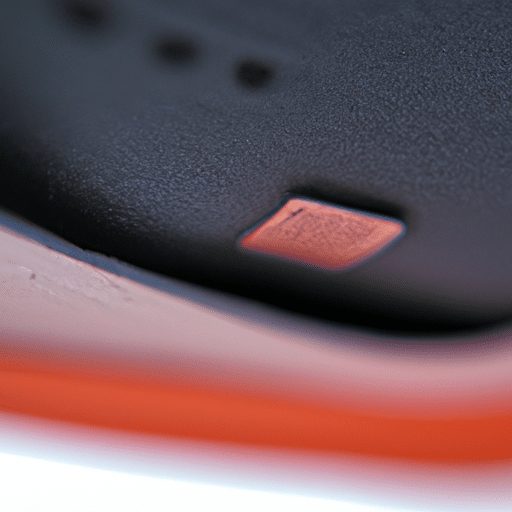Good news for all those seeking extra comfort and support for their feet! You might have wondered if getting a bigger shoe size is necessary when using insoles, and we’ve got the answer for you.
In this article, we explore whether a larger shoe size is indeed required when using insoles, as well as provide some helpful tips to ensure your feet are well taken care of.
So, sit back, relax, and find out if a bigger shoe size is the key to ultimate foot bliss.
Should I Get A Bigger Shoe Size For Insoles?
Importance of Insoles in Footwear
Insoles, also known as shoe inserts or footbeds, are essential in many types of footwear. They provide additional support and cushioning to the feet, promoting better foot health and overall comfort. Insoles are designed to address various foot conditions, such as arch pain, plantar fasciitis, and flat feet. By wearing insoles, you can alleviate foot discomfort, improve your posture, and enhance your shoes’ overall fit and function.
Understanding Shoe Sizing
Before determining whether you should get a bigger shoe size for insoles, it’s important to understand how shoe sizing works. Shoe sizes are typically based on a standardized system that varies by region or country. They are measured in length, usually in inches or centimeters, and often labeled with numerical values. However, it’s worth noting that shoe sizes may vary slightly between different shoe brands and styles.
Signs that Indicate Insoles are Needed
Several signs indicate you may benefit from using insoles. If you experience foot pain, particularly in the heel, arch, or ball of the foot, it may be a sign that your shoes lack adequate support.
Other signs include discomfort while walking or standing for extended periods, a feeling of instability in the feet, or excessive foot fatigue. If you notice any of these symptoms, it’s worth considering the use of insoles.
Pros of Getting a Bigger Shoe Size for Insoles
One option to accommodate insoles is to get a bigger shoe size. This can benefit individuals with wider feet or who need extra space to fit the insoles inside their shoes comfortably.
Opting for a larger shoe size allows more room for the insoles without compromising on the fit or causing discomfort. This is especially important if you require thicker or customized insoles to address specific foot conditions or provide maximum support.
Cons of Getting a Bigger Shoe Size for Insoles
While getting a bigger shoe size may seem simple, it has a few drawbacks. One significant drawback is that the larger shoe size may alter the shoe’s overall fit. This can result in a loose or unstable fit, potentially leading to blisters, friction, or even foot injuries. Additionally, finding the right balance between a larger shoe size and an accurately fitting shoe can be challenging, as it may require trial and error or the assistance of a knowledgeable salesperson.
Effectiveness of Insoles in Resolving Foot Discomfort
Insoles can effectively resolve foot discomfort and alleviate various foot conditions. The additional support and cushioning help distribute pressure evenly across the foot, reducing strain on specific areas.
This can help alleviate pain, improve posture, and enhance overall foot function. However, it’s important to note that the effectiveness of insoles may vary depending on the individual and the specific foot condition they are addressing. It’s always a good idea to consult a healthcare professional or podiatrist for personalized advice.
Tips for Choosing the Right Insoles
When choosing insoles, selecting the right type and size is essential to ensure optimal comfort and support. Consider the following tips:
- Arch Type: Determine your arch type (low, neutral, or high) to choose insoles that provide adequate arch support.
- Foot Condition: Identify any specific foot conditions you may have, such as plantar fasciitis or overpronation, and look for insoles designed to address those conditions.
- Size: Ensure the insoles match your shoe size, or if necessary, consider getting a larger size to accommodate thicker or custom insoles.
- Material and Cushioning: Look for insoles made from high-quality materials with sufficient cushioning for maximum comfort and shock absorption.
- Replace Regularly: Remember to replace your insoles regularly, as they can wear out over time and lose effectiveness.
Alternatives to Getting a Bigger Shoe Size
If you are hesitant about getting a bigger shoe size, there are alternative options to consider. One option is to choose shoes that provide removable or adjustable insoles. This allows you to customize the fit by replacing the original insoles with ones that suit your needs. Another alternative is choosing shoes designed with built-in arch support or extra cushioning. These shoes offer the benefits of insoles without the need for additional inserts.
Consulting with a Podiatrist
If you’re unsure whether you should get a bigger shoe size for insoles, consulting with a podiatrist or healthcare professional is always a good idea. They can assess your specific foot condition, recommend suitable insoles, and provide expert advice on whether getting a larger shoe size is necessary. A podiatrist can offer personalized guidance and help you choose the most appropriate insoles.
Conclusion
Deciding whether to get a bigger shoe size for insoles is a personal choice that depends on various factors, including foot condition, comfort, and fit. While a larger shoe size can provide more room for insoles, it may also compromise the overall fit and stability of the shoe.
It’s important to consider alternative options, consult with a podiatrist, and choose the right type and size of insoles to ensure optimal foot comfort and support. By prioritizing foot health and taking the necessary steps, you can find the perfect balance between insoles and shoe size for maximum comfort and happy feet.








































